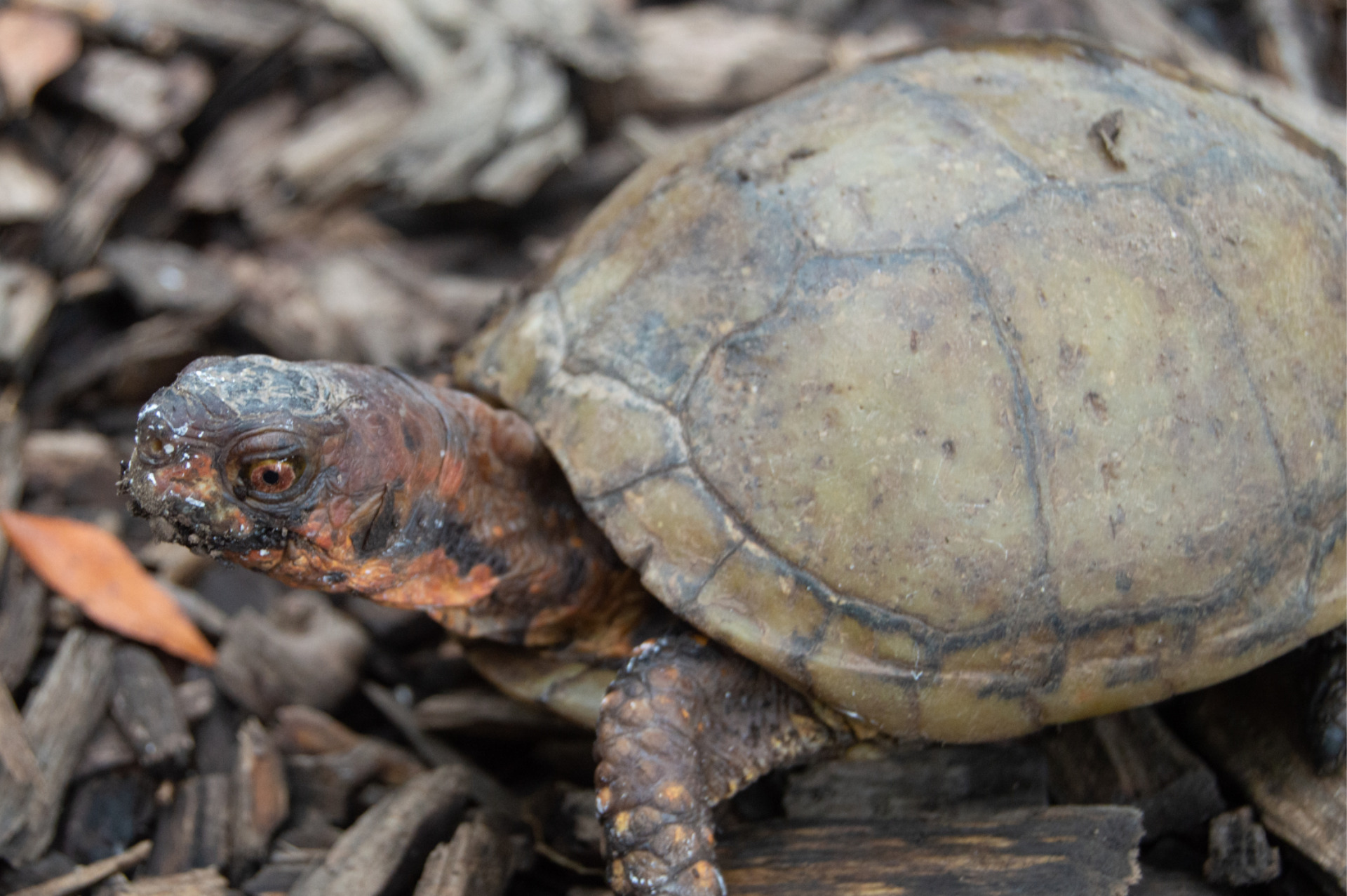Three-Toed Box Turtle

Basic Information:
Scientific Name: Terrapene carolina triunguis
Habitat: Three-toed box turtles are found throughout the forested regions of the eastern United States.
Diet: Three-toed box turtles are omnivores and are known to eat berries, mushrooms, roots, greens, insects, and invertebrates such as snails, slugs, and worms.
Size: 0.2 feet tall / 0.5 feet long
Weight: 1 to 2 pounds
Lifespan: 50 to 80 years
Distribution Map:
I.U.C.N. Conservation Status:

What does this mean?
Vulnerable – a species determined by the International Union for Conservation of Nature (I.U.C.N.) to possess a high risk of extinction as a result of rapid population declines of 30 to more than 50 percent over the previous 10 years (or three generations), a current population size of fewer than 1,000 individuals, or other factors.
About Three-Toed Box Turtles:
Named after their ability to fully enclose themselves inside their shells due to their hinged plastron, box turtles are a common turtle found across the eastern half of the United States. Three-Toed Box Turtles here at the Utica Zoo are more specifically found naturally in the south-eastern states from Texas and Louisiana up to Missouri. This breed of box turtle is unique due to the three toes that they have on their back feet. They also prefer to live in humid areas and are found submerged in water and moist areas far more than any other box turtle. Like all other turtles in this part of the world, they have become more and more threatened by human expansion over the last few decades and are now listed as Vulnerable by the IUCN.
Did You Know?!
- Box turtle shells are unique, with hinges on the underside that allow the turtle to pull in and close up completely when threatened. Once ‘boxed’ in, their shells are almost impossible to pry open.
- Males box turtles usually have red eyes and a concave plastron (bottom of their shell), while females have brown eyes and a flat plastron (bottom of their shell).
- Baby box turtles are rarely seen! The hinge for their shell does not develop until 3 or 4 years.
- Female box turtles can not reproduce until they are about 10 years old.
